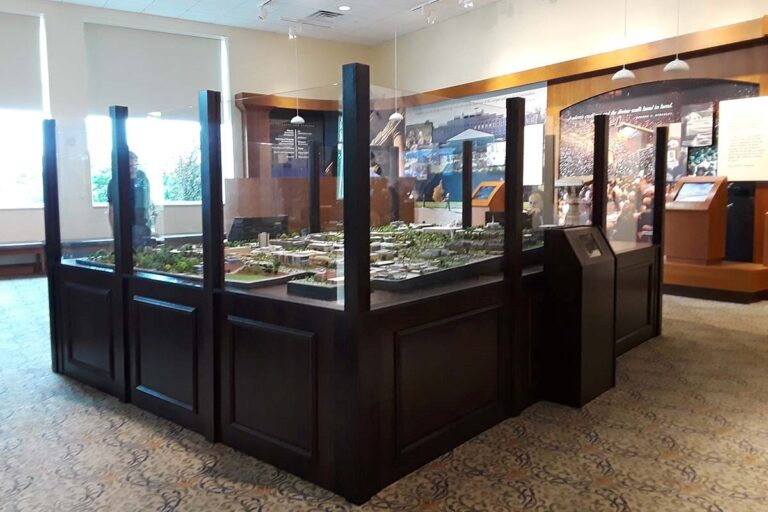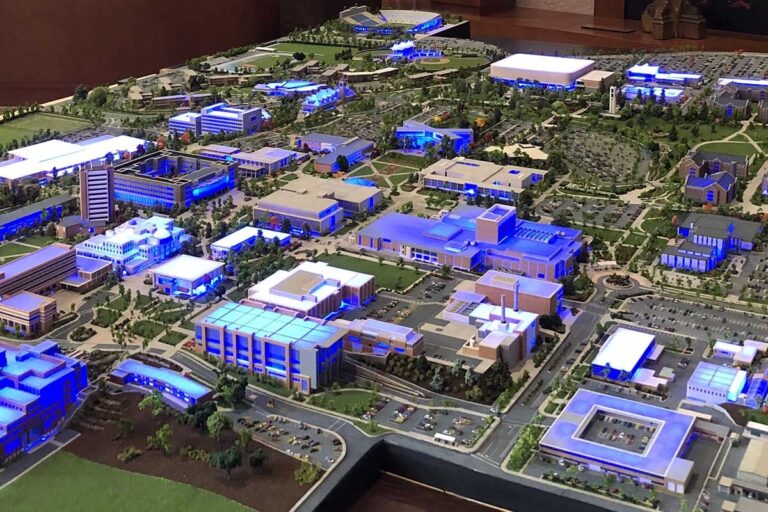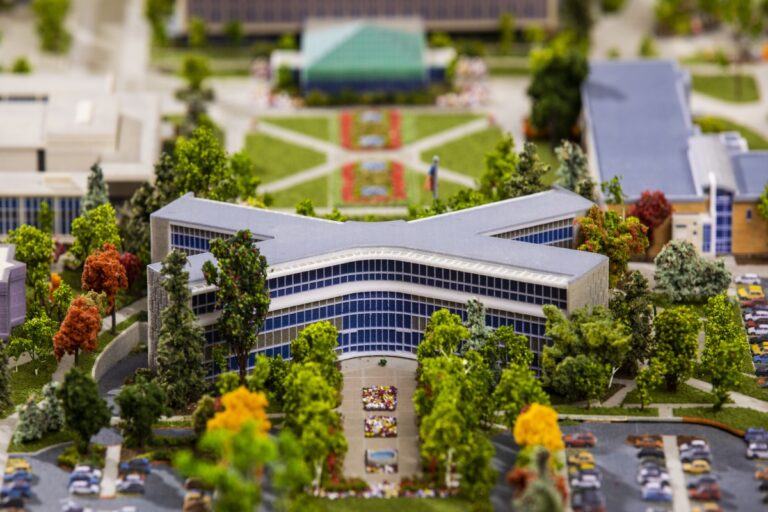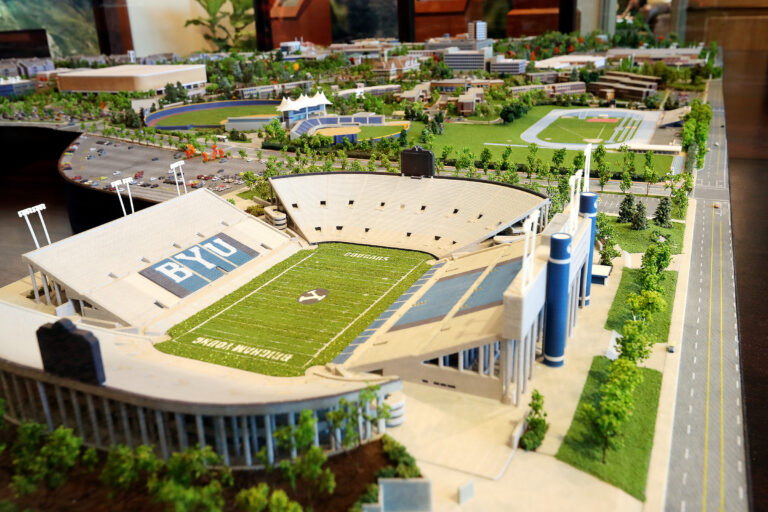BYU Campus Custom 3D Diorama
Case Study: Building a scale model diorama of Brigham Young University Campus
Table of Contents
Campus 3D Diorama + Technology
Brigham Young University (BYU) is located in Provo, Utah, nestled below the Wasatch mountains. WhiteClouds was commissioned to build an architectural diorama (10’x12′) showcasing the beauty and geography of the campus with a special emphasis on the huge variety of trees and their historical significance. The diorama includes 88 buildings. Each one is masterfully crafted with state-of-the art 3D design and printing technology.
From a technology perspective, multiple iPads have pre-programmed lighting controls for each of the 88 building’s LED’s. Matching cabinetry and glass walls finish off the aesthetics of the architectural diorama. To enrich the effectiveness of the diorama, augmented reality is used on mobile devices to combine the digital and physical diorama features. Traditional model-making processes, along with various 3D printing technologies emphasize the realism of the stone-looking buildings. Roads, sidewalks, and parking lots have been 3D printed with a sandstone type finish. For statues needing extreme details, high-definition 3D printers printed details as small as 16 microns (about 1/6 the size of a human hair).
To add to the ambiance, you can see the vehicles driving on the road or parked in the parking lots, trees and foliage in bright autumn colors, pansies in the flower beds, the hands on the clock on the Gordon B. Hinkley Alumni and Visitors Center, the flag flying in front of the N. Eldon Tanner Building and the “Y” on the mountain. And if you look closely, you’ll see a man and woman depicting the couple that funded the project and an Easter egg. Detailed coverage of the unveiling ceremony was published by the Deseret News.
Watch the video below to see a time lapse of the construction and BYU student reactions to the completed project.
The initial phase of the project was to build a small section of the campus (two images below), highlighting pathways and landscaping around the Karl G. Maeser building. This was used to successfully attract donors for the funding of the project.
To get an idea of the size and scope of the project, more than 1,000 hours were spent in the design phase, 640 hours were spent printing all 88 of the buildings, and the fabrication process took nearly 750 hours. Approximately 367 acres are represented in the BYU project, 700 cars are included in the diorama and installation took about 240 hours, more than four weeks. Here’s a video of the installation process:
Gallery of BYU Campus Custom Diorama Display
Get a Free Price Estimate for a Custom 3D Diorama Model
Custom Fabrication Workflow




